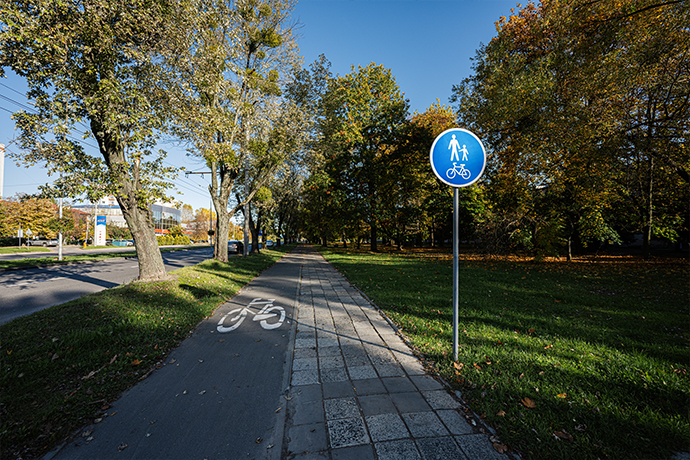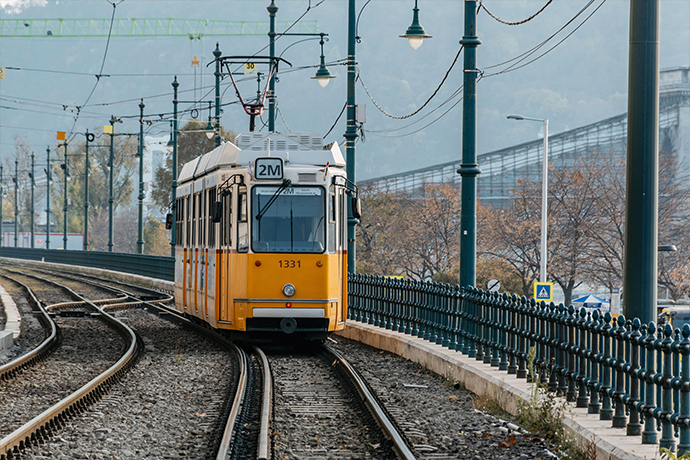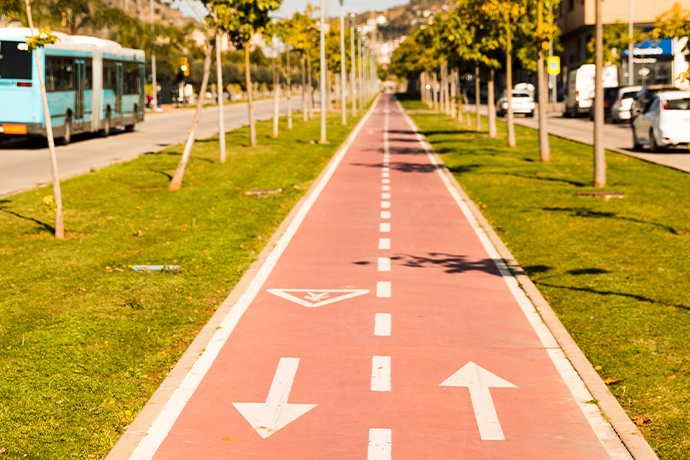 SPEAKERS
SPEAKERS
 TOPICS
TOPICS
Learn about public transportation in the future with autonomous vehicles, discover sustainable and eco-friendly public transit solutions, and understand the role of technology in transportation.

As populations continue to grow, the future of public transport in urban areas is increasingly dependent. The modern-day cities faced predicaments like traffic snarls, rising environmental issues, and a cry for transport modes that shall have to be not only efficient but within reach of the masses. Technological adoption and the laying of emphasis on sustainable approaches form the cutting-edge of world public transit systems.
From the probable implementation of automated buses to changes in the matrix of infrastructure, the evolution of urban transportation is set to razor-sharpen mobility, slash carbon footprints, and improve the quality of life for millions of city dwellers.
In this paper, we will consider the most advanced innovations and the ways of their further development, which will form the basis for the development of the following public city transport.
The ability of autonomous vehicles to run without the constraints associated with human drivers makes this invention, as a core technology related to future public transportation, possible. This is ready to change and open an epoch of efficiency and convenience for future public transport. Such an invention is likely to reduce the waiting times and enhance service reliability, thus being more attractive to city residents for public transit.
Also, the vehicles can optimize their routes in real time based on traffic conditions, thereby improving the efficiency of the transit system in the city. Cities can greatly ease congestion and reduce the impact of transportation on the environment by incorporating such vehicles into their respective public transport networks.
Anyway, autonomous vehicles are likely a synergistic part of any transport future because they open up a pathway to a truly large-scale, operated public transport electrification. Most self-driving buses and shuttles now being developed drive on electricity and will make public transit a more sustainable and greener means of commuting all over the world.
Electric public transport will reduce not only greenhouse gas emissions but also the noise in urban environments, making them quieter and cleaner. This public transport technology is continuously being developed and will prove to have shaped some of the transportation forms in the future and hence will have changed how people travel and go through city life.

Smart infrastructure is a key enabler for future public transport, one that will incorporate the latest technologies in an effort to deliver a more efficient, reliable, and user-friendly transportation system.
Sharing real-time traffic flow, public transit scheduling, and passenger information among the sensor-based and data analytic-based connected transportation systems can enable real-time coordination among the different modes of transport without time wastage.
For example, smart traffic lights could perceive and adjust timing according to the existing traffic to make electric public transport with smooth and faster commutes. Integration of such technologies is important to shape the future of responsive, adaptive, and efficient forms of transportation.
Connected transport systems here are further broadened to enhance the commuter's experience by incorporating real-time updates and personalized information regarding travel. Mobile applications and digital platforms will notify passengers of delays, alternative routes, and thus transit options that become available to make the ride predictable and convenient.
This part of the transport system will enhance overall efficiency and simultaneously enhance ridership through a user-centered approach. Future of mobility speakers often highlight these advancements as key factors in creating sustainable and resilient urban transit systems that can adapt to the growing demands of urban populations.
Sustainable and green public transport solutions are compulsory elements of the future public transportation technology landscape. Various cities across the globe contemplate ways to reduce their carbon footprints. Transitioning into public transport powered by electricity is among them. The result is that e-buses, trams, and trains are zero tailpipe emission technologies and bring significant reductions in conventional air pollutants and GHG emissions.
But along with environmental protection, this new trend in clean energy sources benefits public health by lowering the prevalence of respiratory diseases caused by air pollution. Electrification of public transport is possible; by virtue of this, it can bring huge benefits for public health due to the possible improvement in relation to electric transport. It represents much more efficient and affordable electric public transport.
Regenerative braking is just a part of the sustainable public transport technologies that are shaping up besides electrification as one of the key players in the transport future. Innovations in the different forms, lil hydrogen fuel cells, solar-powered transit stations, and energy-efficient infrastructure, are championing the path for the future modes of eco-friendly and resilient transportation.
For example, it helps the electric train to capture and utilize the dissipated energy, hence increasing the efficiency of the system. Such a blend of approaches will render the sustainable priorities operational and infrastructural levels for public transport. Sustainable priorities will ensure that cities build more resilient and environment-friendly transportation systems in their effort to accommodate the growing urban populations while respecting the planet.

Street technologies, like atomic data analytics, mobile apps, and digital ticketing systems for public transport, all ensure that the commuter is better prepared for transport in the most hassle-free way possible. Real-time updates on transit schedules, delays, and alternative routes provide data to enable passengers to make fully informed decisions, in the process helping reduce all too familiar frustrating wait times and travel inconveniences.
Such technologies can then be further customized for the travels, offering recommendations related to the users and, hence, public transport is much more appealing and a friendlier way of traveling into the future.
Another major technological development that has an effect on the experience of commuting is public electric transport becoming more prevalent. The electrically driven buses, trains, and trams are pollution free and noise, as well as jerk reduction in them, is up to an extent where almost all of it is eradicated when compared with the conventional diesel-powered vehicles, explaining that the ride becomes somewhat more smooth and noiseless.
Travel on smart infrastructure, be it Wi-Fi-enabled buses or other connected transport systems, to guarantee every commuter's internet connectivity and productivity. These are the innovations promising to bring the future forms of transportation, combining better efficiency with satisfying passengers. Cities with super advances in technology for public transport will translate into a seamless, convenient, and reliable commuting experience for the residents.
It is definitely technology, sustainable best practices, efficient solutions, and all means supportive of the environment that are at the forefront of the future of urban public transport—be it vehicle automation and intelligent infrastructure, or green solutions to make the commuter experience complete.
Technology related to innovation promises to change urban mobility in the domain of sustainable, efficient practices that foster a good environment in providing everyone with the best transportation service. We are merely paving a way for greener, energetically efficient, and user-friendly means through which to move increasing desires of people. Public transport technology and choices following this preference with the technology will eventually result in cities with resilient, sustainable, and vigorous urban ecosystems that improve urban life quality.
